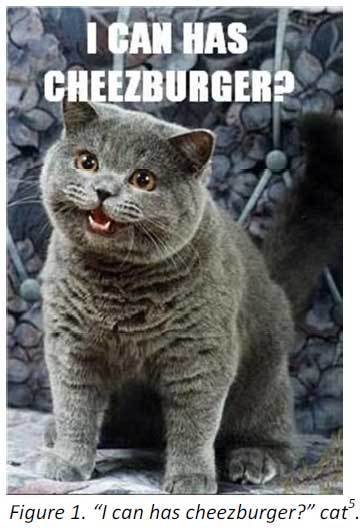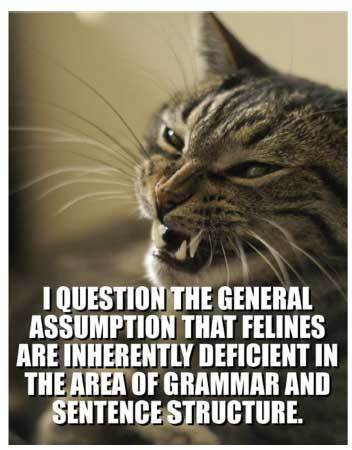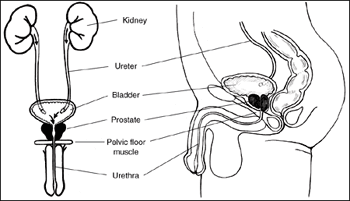Marc Abrahams's Blog, page 521
January 20, 2013
A scholarly look at scholars’ amusing study titles
Rolf Zwaan (co-author of the Ig Nobel Prize winning study “Leaning to the left makes the Eiffel Tower seem smaller: Posture-modulated thought“) is blogging about at amusing titles given to scholarly studies. He looks especially at his own field:
I culled amusing titles from the 2003-2012 issues of Psych Science. It was not always easy to determine what was an amusing title and what not. For example, I initially false-alarmed to this one.
Chicks Like Consonant Music
It actually is descriptive. So it may be that others would come up with a slightly different set of titles than I did. I think the differences will be small though.
In this post I will share some qualitative observations (if you want the entire list of amusing titles, just contact me).
BONUS: Of course, to see many such titles, and more, one can also dip into any issue of the Annals of Improbable Research, where issue by issue, year by year, they accrete.
UPDATE: Part 2

Guéguen, Now with Flowers
Nicholas Guéguen, of whom we have written again and again, is back, now bearing on flowers:
“‘Say it … Near the Flower Shop’: Further Evidence of the Effect of Flowers on Mating,” Nicolas Guéguen, Journal of Social Psychology, vol. 152, no. 5, 2012, pp. 529-532.
“For millennia, flowers have been used to convey romance. In this study, 18–25-year-old women (N = 600) walking alone in a shopping mall were approached by an attractive 20-year-old male-confederate who solicited them for their phone number. The women were solicited as they were walking in the area of a flower shop, a cake shop, or a women’s shoes shop. It was found that women agreed more favorably to the confederate’s courtship solicitation when solicited in the area of the flower shop. Positive mood induced by exposure to flowers was used to explain these results.”
(Thanks to investigator Neil Martin for bringing this to our attention.)

January 18, 2013
“Shiny Robot” — A percussive video experience
“The essence of my computational-acoustics dissertation can be boiled down to trying to teach a computer to hear percussion in music like a human. Having a human, Alain Rouvez, teach a robot, Shiny Robot, how to dance seemed like the perfect metaphor,” writes Anderson Mills in describing the video he submitted to the most recent Dance Your PhD competition:

Laugh-Out-Loud-Speak, academic Konklushuns
 Since their mainstream emergence online circa 2006/2007, LOLcats (Laugh Out Loud Cats) have afforded an abundance of amusing annotated amateur artistry. Although it took some years to attract the attention of serious academic investigators, the unusual form of linguistic construction used by the LOLcat community – now known as ‘LOLspeak’ – has at last been carefully examined, catalogued and analysed in several scholarly works. Three of which we profile(z) below.
Since their mainstream emergence online circa 2006/2007, LOLcats (Laugh Out Loud Cats) have afforded an abundance of amusing annotated amateur artistry. Although it took some years to attract the attention of serious academic investigators, the unusual form of linguistic construction used by the LOLcat community – now known as ‘LOLspeak’ – has at last been carefully examined, catalogued and analysed in several scholarly works. Three of which we profile(z) below.
Example [1]
I can haz language play: The construction of language and identity in LOLspeak
- by Doctoral students Lauren Gawne and Jill Vaughan from the School of Languages and Linguistics, University of Melbourne, Australia. (published in the Proceedings of the 42nd Australian Linguistic Society Conference – 2011). Despite that fact that some have dismissed LOLcats as “The stupidest possible creative act” (Shirky 2010, quoted in Miltner 2011:9), nevertheless, say the authors : “LOLspeak is a complex and systematic reimagining of the English language.” In particular, the paper examines the resources provided by the online LOLcat Bible, and conclude :
“kthxbai! Srsly
LOLspeakers show high levels of competence at simultaneously playing with multiple linguistic processes (implicating orthography and phonetics, morphology, syntax, clauses) and we believe that an examination of these processes will provide an important contribution to our understanding of language play, and of creative linguistic endeavours more generally.”
Example [2]
Lolcats and Lolspeak: the importance of the Internet culture for English professionals
- by Eduarda Abrahão de los Santos of the Pontifícia Universidade Católica do Rio Grande do Sul (PUCRS), Brazil. (published in Brazilian English Language Teaching Journal (BELT), Vol 3, No 1, 2012, 62-76)
This paper goes to the lengths of providing a glossary of LOLspeak :“To make the glossary, twenty two Lolcat macros from the site icanhascheezburger.com were transcribed and then translated into orthographically correct English.” Finding, for example : Sebben = seven, Puhleeze = please, and Veelowsor raptor = velociraptor. And noting that :
“Lolcats and Lolspeak, as well as the whole meme culture, deserve more attention from language professionals. The advantages of the use of Lolspeak, as described in this article, are various, and the potential researches on Lolcats and Lolspeak are many. Linguists and teachers should not ignore this fresh and inexhaustible source for research and study, as it can help them in many ways.”
Example [3]
Iz in ur meme / aminalizin teh langwich: A linguistic study of LOLcats
- by Aliza Rosen of Goucher College, Baltimore, Maryland, US. (published in Verge, issue 7) In which the author performed a unique experiment whereby a passage from Wikipedia (about cats) was auto-translated by www.speaklolcat.com and www.slangoholic.com (now apparently offline). The results were then compared with the original passage, and contrasted with other modern pidgin languages.
“While it can be argued that ‘kitty pidgin’ is the contact language adopted by cats in order to communicate with humans, further investigation shows a lacking correlation between LOLspeak and the prototypical pidgin language.”
And, to sum up :
“In konklushun, teh LOLkitteh speach is, liek Becky Hogge writed, “a rich source of material for linguistic analysis” (Hogge 52). Teh influence of Leetspeak, and rezemblins to baybeh talk and pidgin langwichez, iz strawng. Dis iz perhaps cuz teh kittehz nevar supozd to leev teh hauz, so dey haz lotz of interakshun wif baybehz, teh peeps hoo speekz to teh baybehz, an compootr geekz, awl of wich iz moastly resurvded foar teh domesstik settin. Oar, iz possibul teh LOLspeak poak fun at, bai exaggerashun, dat teh kittehz iz treeteded an speakd to liek childrinz.”
Note:
 The LOLcat image here (which, intriguingly, does not feature LOLspeak) “I QUESTION THE BASIC ASSUMPTION THAT FELINES ARE INHERENTLY DEFICIENT IN THE AREA OF GRAMMAR AND SENTENCE STRUCTURE” featuring in studies [1] and [3] also appears in several other complementary (or possibly complimentary) variants : Exhibit a , Exhibit b
The LOLcat image here (which, intriguingly, does not feature LOLspeak) “I QUESTION THE BASIC ASSUMPTION THAT FELINES ARE INHERENTLY DEFICIENT IN THE AREA OF GRAMMAR AND SENTENCE STRUCTURE” featuring in studies [1] and [3] also appears in several other complementary (or possibly complimentary) variants : Exhibit a , Exhibit b

Further Finding About Morality: Backpack-Induced Morality
Morality may involve more than the relative lengths of a person’s fingers. Behold a soon-to-be-published study about backpacks:
“The Burden of Guilt: Heavy Backpacks, Light Snacks, and Enhanced Morality,” Maryam Kouchaki, Francesca Gino [pictured, tinily, here], and Ata Jami, in press, Journal of Experimental Psychology: General, 2013. The authors, at Harvard University and the University of Central Florida, explain:
“we argue that the physical experience of weight is associated with the emotional experience of guilt and thus that weight intensifies the experience of guilt. Across four studies, we found that participants who wore a heavy backpack experienced higher levels of guilt as compared to those who wore a light backpack. Additionally, wearing a heavy backpack affected participants’ behavior. Specifically, it led them to be more likely to choose healthy snacks over guilt-inducing ones and boring tasks over fun ones. It also led participants to cheat less. Importantly, self-reported guilt mediated the effect of wearing a heavy backpack on these behaviors. Our studies also examined the mechanism behind these effects and demonstrated that participants processed guilty stimuli more fluently when experiencing physical weight.”
(Thanks to HBS Working Knowledge for bringing this to our attention.)
Some or all of the authors plan to discuss this in a somewhat public setting on January 28, 2013.

Moral judgment and the relative lengths of your fingers
You may find it hard to argue against, or even to begin arguing for, the line of reasoning in this study. It shows how a people’s capacity to make moral judgements is related to the relative lengths of two of their fingers:
“Testosterone administration modulates moral judgments depending on second-to-fourth digit ratio,” Estrella R. Montoya, David Terburg, Peter A. Bos, Geert-Jan Will, Vincent Buskens, Werner Raub, Jack van Honk [pictured right with his fingers are not visible, and below with some fingers visible], Psychoneuroendocrinology, epub January 2, 2013. The authors, at Utrecht University, Leiden University, and the University of Cape Town, explain:
“Recent testosterone administration studies show effects on cognitive empathy and social cooperation, which depend on right-hand’s second-to-fourth (2D:4D) digit ratio… Subjects who show an increase in utilitarian judgments following testosterone administration have significantly higher than average 2D:4D… while subjects showing more deontological judgments following testosterone administration have near-significantly lower 2D:4D…”
BONUS: Finger ratios don’t always predict body odor

Scary coffee headline of the week: Two cups to incontinence
This new article adds fuel of some sort to the ever-brewing debates as to whether coffee has tremendously good effects on people, or tremendously bad effects, or tremendously few effects, or all of the aforementioned, or none:
“Urinary incontinence: Could two cups of coffee a day cause urinary incontinence in men?” Melanie Clyne, Nature Reviews Urology, epub January 15, 2013. The author writes:
“After controlling for age, risk factors, and potential confounders, a recent study of National Health and Nutritional Examination Surveys (NHANES) data has demonstrated a link between caffeine intake of ≥234 mg/day (equivalent to less than two cups of coffee) and moderate or severe urinary incontinence in men.”
BONUS: A diagrammatic look (by the US National Kidney and Urologic Diseases Information Clearinghouse (NKUDIC)) at the region of concern. The effects of coffee are or are not plainly visible:

January 17, 2013
Confronting the question “Do Hens Have Friends?”
Do hens have friends? The question finally got a good, hard academic look-see, resulting in this study:
“Do Hens Have Friends?” Siobhan M. Abeyesinghe [pictured here], Julian A. Drewe, Lucy Asher, Christopher M. Wathes, Lisa M. Collins, Applied Animal Behaviour Science, vol. 143, no. 1, January 15, 2013, pp. 61-66. The authors, at the Royal Veterinary College, the University of Nottingham, and Queen’s University Belfast, UK, report:
“We investigated in detail the existence of dyadic preferential associations in small groups of domestic laying hens. Spatial and temporal associations were examined in two contexts (day activity and evening roosting), within 8 identical pens of 15 laying hens over 8 weeks. Little aggression was observed. Social network analysis was performed to investigate correlations in who associated with whom using weighted degree (number) and binary (presence or absence) data for shared resource areas and proximity to other individuals…. Most dyads were never observed roosting together and, although some apparently perched together frequently, the low number of nights perching and proportion of nights spent together indicates these findings should be interpreted with caution. Overall, we found no convincing evidence of dyadic preferential relationships expressed by close active and resting proximities. Further work is required to confirm whether these findings hold true in other experimental contexts, are affected by social experience and if they hold in common with the progenitor sub-species.”

January 12, 2013
Shakespearian delicious butchery terms
The Shakespeare’s England blog has a list of cooking/butchery words and phrases that involve certain animals. The list includes the following (and many others);
I stumbled upon these rather charming 17th Century cooking terms today.
To Carve is to Cut up a Dish of Meat, but according to the Meats, use these Terms for their Carving:
Break that Deer.
Leach that Brawn.
Unlace that Coney.
Chine that Salmon.
String that Lamprey.
Splat that Pike.
Sauce that Plaice and Tench.
Splay that Bream.
Side that Haddock.
Tusk that Barbell.
Culpon that Trout.
Fin that Chevin…
The image shown here, from that blog, is The Cook – Bernardo Strozzi (c.1620).
(Thanks to investigator Brad Arlen for bringing this to our attention.)

Neil Martin’s odd-article-title collection
Neil Martin, a distinguished member of the Improbable Research editorial board, has long collected oddly-titled academic studies. Many of the citations find their way into the Annals of Improbable Research. Now and then, Dr. Martin presents a few of his favorites to a specialized audience. One such collection appeared in the journal The Psychologist. The Psychologist‘s Silver Anniversary issue later chose that as its “article of 2001″.
BONUS: Neil Martin and Neil Martin, and some tins

Marc Abrahams's Blog
- Marc Abrahams's profile
- 14 followers




